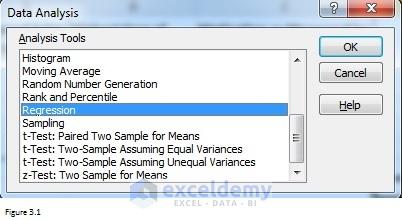
Highlight cells A8:A9 and hit the F2 key (then Edit appears at.This gives only one value of 3.2 in cell B21.

Note that labels are not included when using function TREND.

LINEST(A2:A6,B2:B6,1,0),Īnd then highlight cells A8:B8, say, hit F2 key, and hit To get just the coefficients give the LINEST command with the lastĠ rather than 1, ie. The estimated coefficients have standard errors of, respectively, Hit the F2 key (Then edit appears at the bottom left of the.We consider an example where output is placed in the array D2:E6.įirst in cell D2 enter the function LINEST(A2:A6,B2:B6,1,1). (as here there are two regressors), so we need to use an array formula. The formula leads to output in an array (with five rows and two columns Several forecasts from a two-variable regression. The individual function LINEST can be used to get regression With R-squared of 0.8 and estimated standard deviation of u of 0.36515Īnd we forecast that for x = 6 we have y = 0.8 + 0.4*6 = 3.2. FORECAST(6,A1:A6,B1:B6) yields the OLS forecast value ofįor X=6 (forecast 3.2 cars for household of size 6).STEYX(A1:A6,B1:B6) yields the standard error of the regression.RSQ(A1:A6,B1:B6) yields the R-squared of 0.8.SLOPE(A1:A6,B1:B6) yields the OLS slope estimate of 0.4.INTERCEPT(A1:A6,B1:B6) yields the OLS intercept estimate.

The individual functions INTERCEPT, SLOPE, RSQ, STEYX andįORECAST can be used to get key results for two-variable We wish to estimate the regression line: y = The population regression model is: y = β 1 REGRESSION USING EXCEL FUNCTIONS INTERCEPT, SLOPE, RSQ, STEYX and It is easier to instead use the Data Analysis Add-in for Regression.


 0 kommentar(er)
0 kommentar(er)
